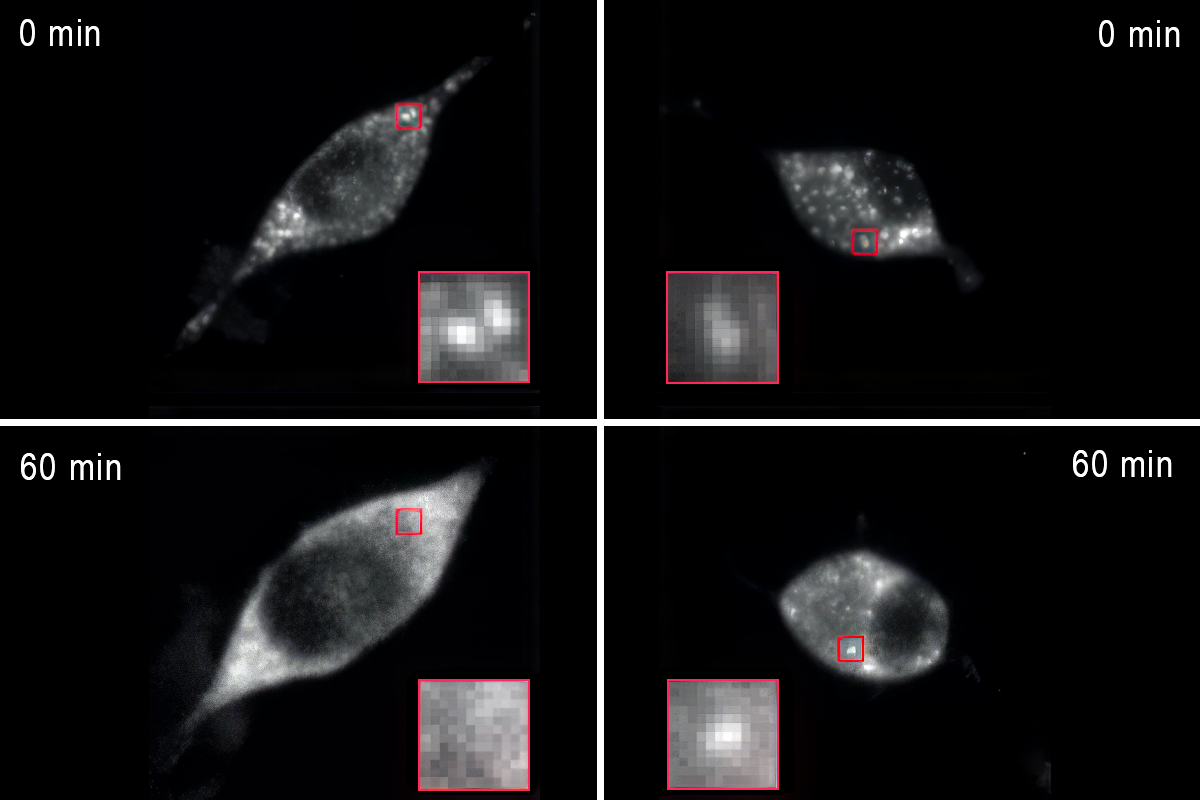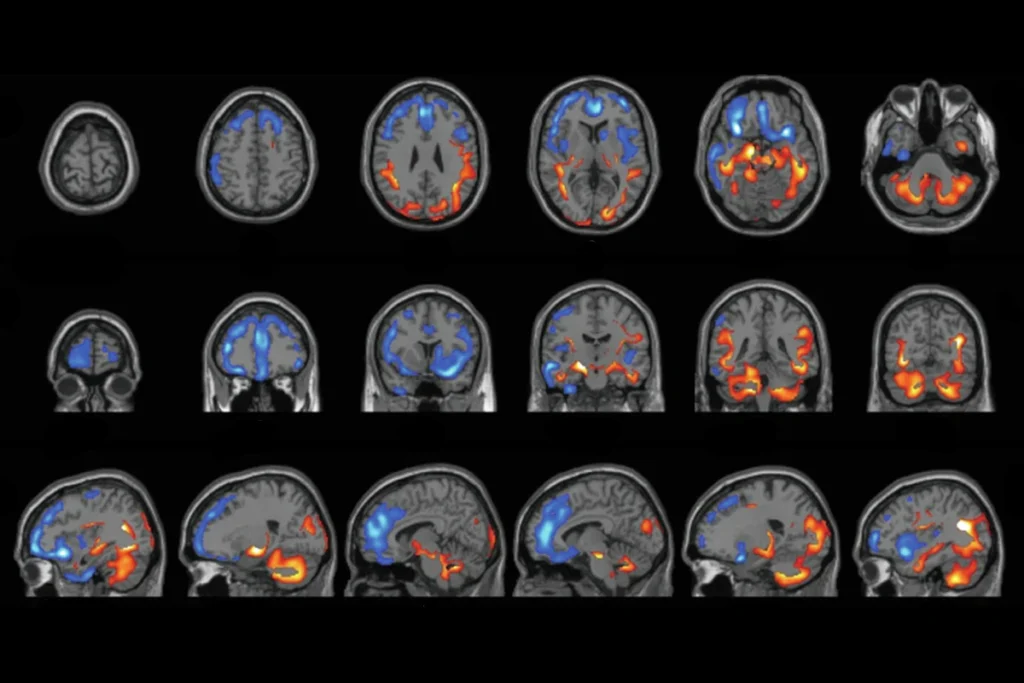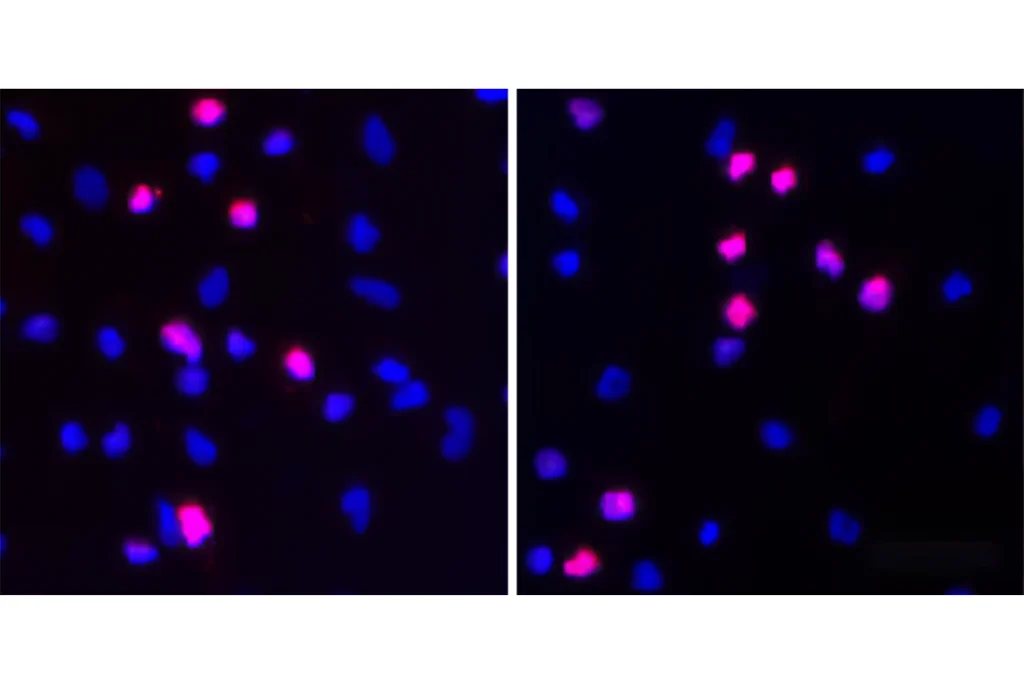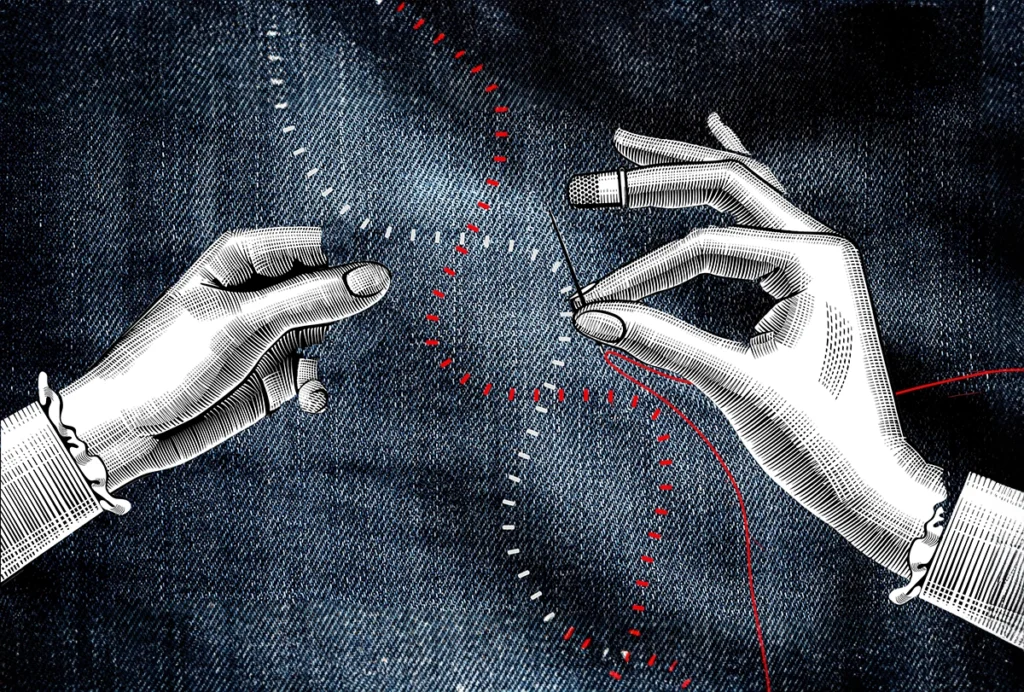The protein CPEB4 controls hundreds of autism-linked genes, but an alternative version of it found in the brains of some autistic people forms irreversible clumps and can’t work correctly, a new study suggests.
CPEB4 helps translate messenger RNAs into proteins. The version seen in some autistic people lacks a segment called microexon 4. People with this version produce less protein from key autism-linked genes, such as PTEN, DYRK1A and FOXP1, and mice that express it show autism-like traits—including repetitive movements and reduced social interaction, a 2018 study found.
“Nobody else had looked at this protein in the context of autism before,” says Raúl Méndez, research professor at the Institute for Research in Biomedicine Barcelona, who co-led both the 2018 study and the most recent work.
“It was quite a mystery as to what [microexon 4] does,” adds study investigator Xavier Salvatella, research professor at the same institute.
Méndez and Salvatella’s latest work explains how microexon 4 regulates CPEB4. The research may inspire others to investigate the functions of microexons in other genes tied to neurodevelopmental or neurodegenerative conditions, Salvatella says. “It’s a new framework to understand how microexons perform their activities.”
C
PEB4 works by forming condensates—dynamic structures that gather proteins and nucleic acids. The presence of microexon 4 in CPEB4 ensures that condensates remain reversible, enabling neurons to respond to different stimuli, the researchers found. When microexon 4 is lacking, CPEB4 condensates lose this flexibility and form irreversible aggregates.Residues of pH-sensitive amino acids in a region that interacts with microexon 4 regulate CPEB4’s activity, stabilizing the condensates and preventing their aggregation, the researchers also found. In mice lacking microexon 4, CPEB4 aggregates accumulate in the brain, which may explain how alterations in this protein can affect neuronal function.
In lab-grown cells that lack microexon 4, a synthetic peptide designed to mimic this small segment helped CPEB4 regain its ability to form reversible structures. This finding could help scientists develop treatments that target CPEB4 aggregates, but applying it in the clinic presents many challenges, such as delivering it to the brain and ensuring specificity to CPEB4, Salvatella says. The team reported their findings last month in Nature.
The study is a milestone in microexon research, says Manuel Irimia, a group leader in computational biology and health genomics at the Centre for Genomic Regulation, who was not involved in the work. “It is a beautiful example of how this microexon can make a difference in terms of how [CPEB4] behaves.”
M
icroexons are often misregulated in autism, and although the 2018 study established a link between microexon 4 and the condition, the latest results provide a clear molecular mechanism, strengthening the case for this microexon being a factor in idiopathic autism, Irimia says.Peptides such as the one developed in the study may point to strategies for targeting protein aggregation, he adds, though their application in humans is complex. Still, Irimia is optimistic: “This is not one of those discoveries that are nice but completely impractical,” he says. “This has potential.”
In the brain, microexons are highly conserved across species, suggesting that they have an important role in neurons, says Christopher Park, research scientist and genomics project lead at the Flatiron Institute’s Center for Computational Biology, who was not involved in the work. (The Flatiron Institute is funded by the Simons Foundation, The Transmitter’s parent organization.) “It’s interesting to see how [microexon 4] connects to the formation of condensates—that’s a pretty cool mechanism that they found.”
But a direct connection between genetic variants in CPEB4 and autism in people has yet to be established, Park notes. “It’ll be cool in future studies to search for human genetic evidence that links this specific protein to autism or certain subtypes of autism,” he says.






